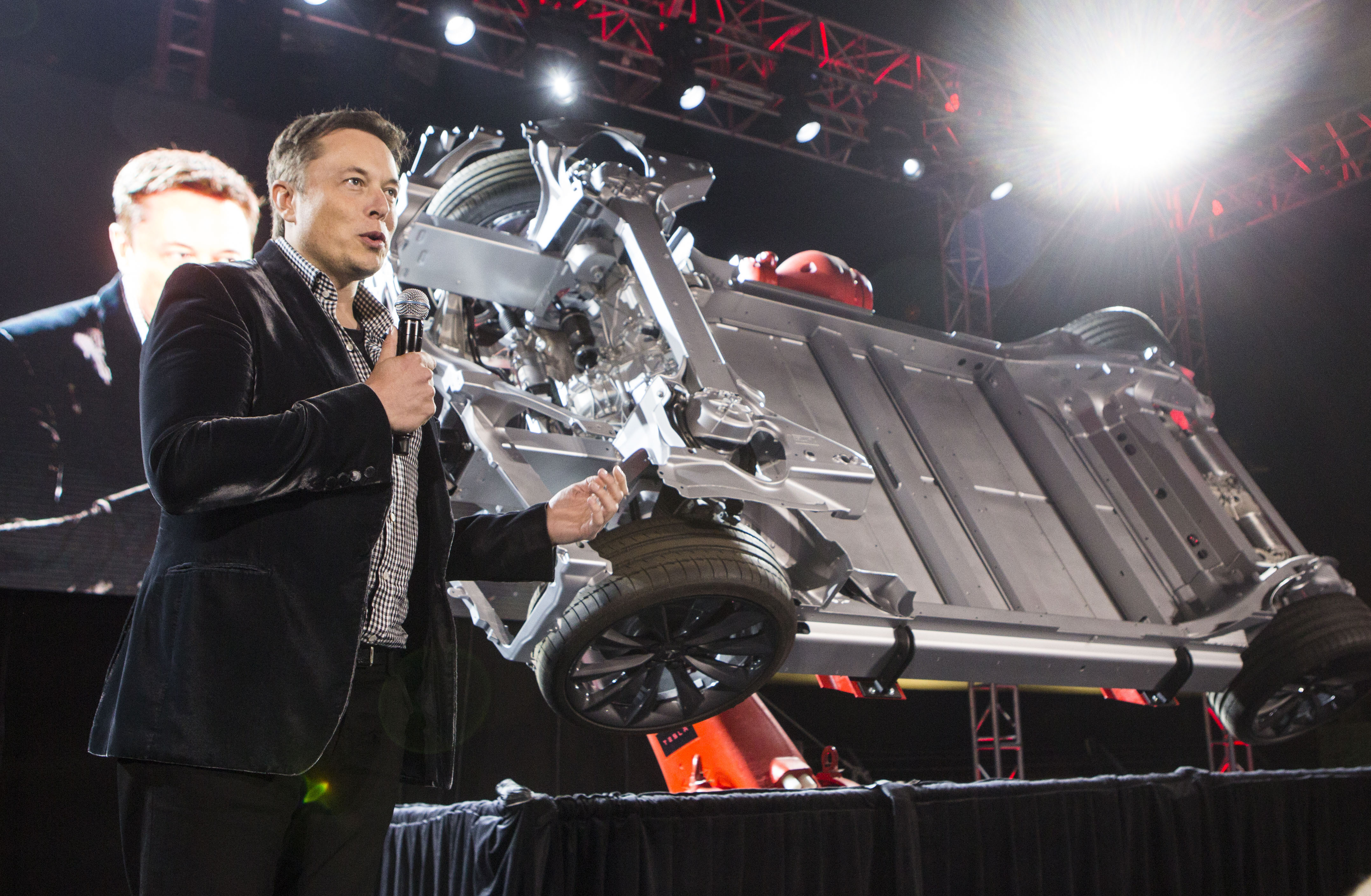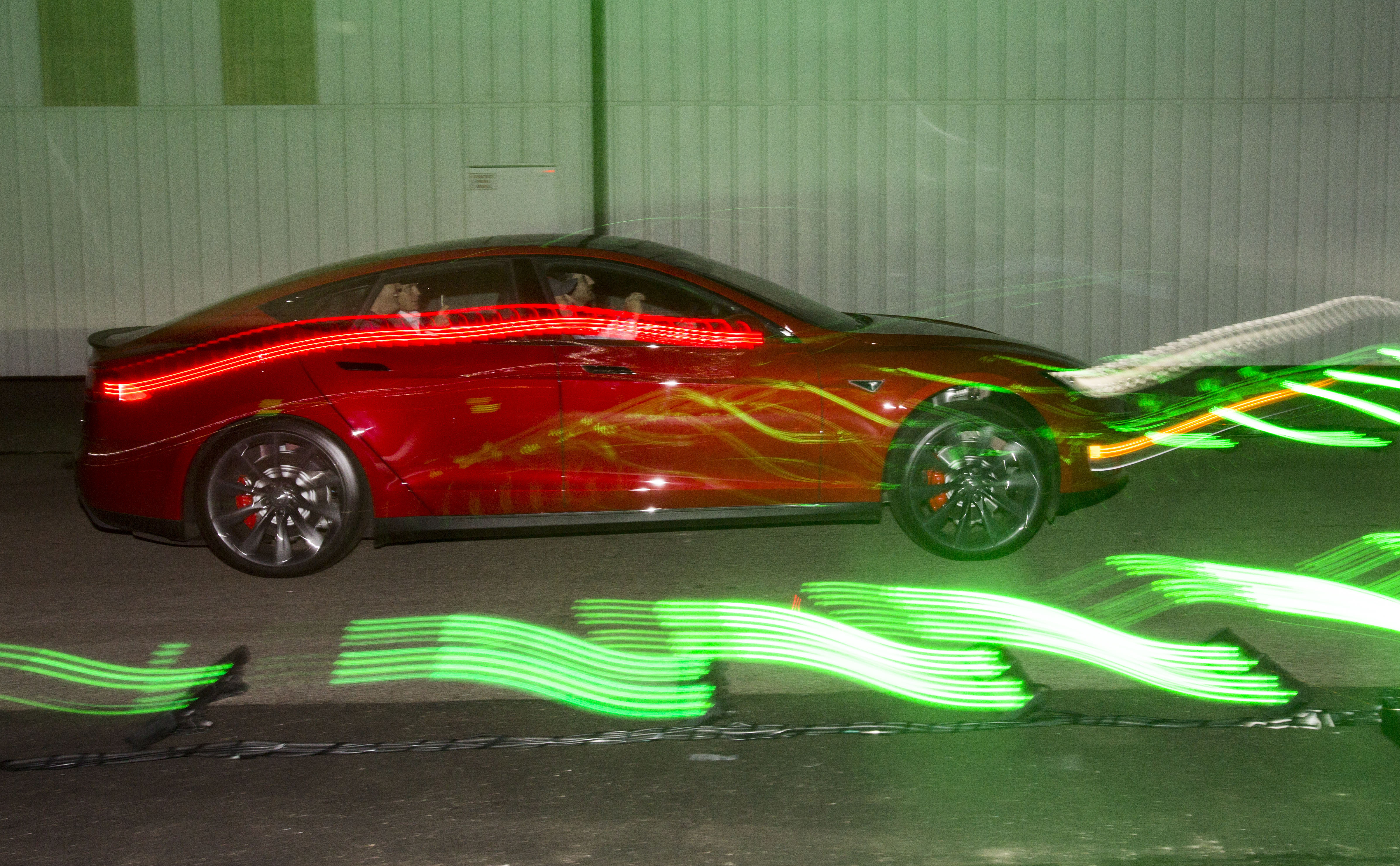How the Tesla 'D' will upend your EV expectations

Tesla unveiled an all-wheel drive version of its Model-S last week. The new car is an improvement over the two-wheel-drive version in almost every way, with increased efficiency, range, acceleration, top speed, and a slew of futuristic auto-pilot features.
Until now, all-wheel-drive (AWD) vehicles were less efficient and slower than rear-wheel drives due to the added mass of a second motor. This is not the case for the new Model S's dual motor system, which makes for a more efficient and powerful car than its two-wheel-drive predecessor. While many Tesla owners currently reside in warm weather states in the US, the ability to power all four wheels is likely to expand Tesla's customer base to the snowy East and Midwest.
Remarkably, the added power does not mean a shorter range. In fact, the efficiency of the digital dual motor system guarantees both a higher speed and a longer driving distance.
“The D”, as Tesla chief executive Elon Musk called it, can drive for 275 miles (443km) on a single charge, 16km more than its single-motor cousin. It also has significantly more acceleration. Musk said his goal was to meet the acceleration of the iconic McLaren F1. The new Model-S meets this target, going from 0 to 60mph (97kmh) in 3.2 seconds, with a top speed of 249kmh, 56kmh faster than its predecessor. The car, pictured below, will reportedly have three option settings: normal, sport, and insane. In the unveiling ceremony Musk equated it to “having your own personal roller-coaster.”
Tesla's digital dual motor system responds much faster than regular mechanical dual motor systems, adjusting power from the front to rear at a millisecond rate. The result is that the car always functions at the highest efficiency point, canceling out the mass of the additional motor.

The new model is also revolutionary for non-performance reasons. A front-facing camera recognises stop signs, speed limits, and traffic lights, directing the car to respond accordingly. The car will also have 360-degree awareness of the world around it, which not only allows it to respond to obstacles, but also self-drive, to a limited extent. Musk says it will self-parallel-park and change lanes safely when turn signals are activated. Model S owners will be able to leave the car when they get home, and have it park itself in their garage. They will also be able to summon the car, as long as they do it on private property.
This marks a new chapter in Tesla's effort to break the stigma that electric cars are slow and impractical. The Palo Alto-based company will also be releasing its first SUV, the Model X, in 2015.
Originally published by Climate Progress. Reproduced with permission.













